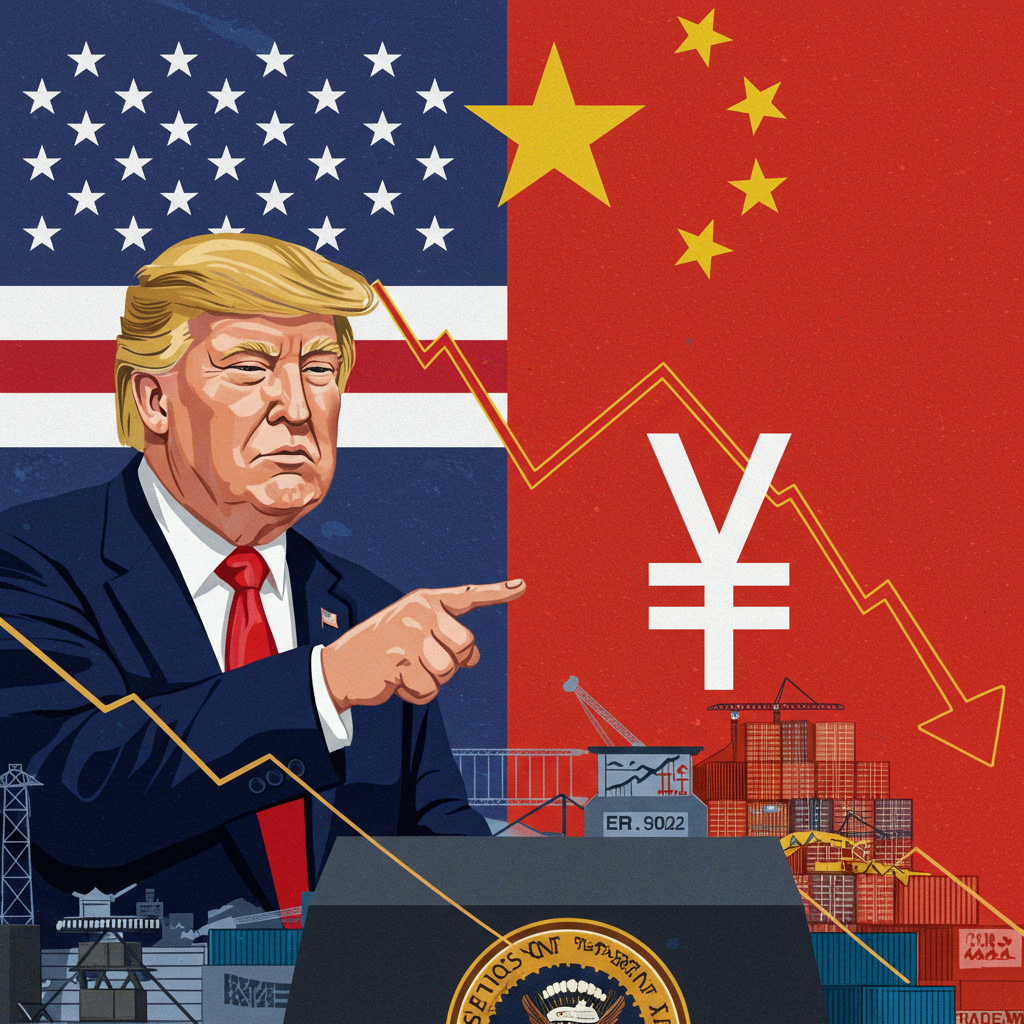Explore the debate on whether Trump is correct about China’s currency manipulation. Delve into expert insights and analysis on this critical economic issue
In his first presidential campaign and throughout his presidency, Donald Trump made one thing abundantly clear: he believed China was manipulating its currency to gain unfair advantages in global trade. He repeatedly accused the Chinese government of deliberately weakening the yuan to boost exports and hurt U.S. manufacturers. But is there truth to this claim, or is it merely political rhetoric? Let’s explore the history, facts, and debates behind this controversial issue.
Understanding Currency Manipulation
Currency manipulation refers to a country’s deliberate intervention in foreign exchange markets to influence the value of its own currency. When a country weakens its currency, its exports become cheaper and more competitive in global markets, while imports become more expensive. This can create trade imbalances and affect economic relationships between nations.
For decades, China has been accused of manipulating its currency—the yuan (also known as the renminbi)—to make its exports cheaper. Critics argue that this has harmed foreign industries, particularly in the U.S., by undercutting prices and driving manufacturing jobs overseas.
Trump’s Claim and Its Roots
Donald Trump’s accusations against China were not entirely new. U.S. officials and economists have voiced concerns about China’s currency practices for years. However, Trump made the claim a centerpiece of his economic and foreign policy strategy.
During his 2016 campaign, Trump famously said, “They’re grand champions at manipulation of currency.” He promised that on “day one” of his presidency, he would label China a currency manipulator.
Trump’s administration eventually followed through. In August 2019, amid escalating trade tensions and a full-blown trade war, the U.S. Treasury officially labeled China a currency manipulator for the first time since 1994. This decision came shortly after China allowed its currency to fall below a symbolic threshold of 7 yuan to the dollar.
But what exactly led to this move, and was it justified?
China’s Exchange Rate Policies
To understand the situation fully, we need to look at how China manages its currency. Unlike fully floating exchange rates seen in countries like the U.S., China’s system is “managed float.” The People’s Bank of China (PBOC), the country’s central bank, sets a daily midpoint for the yuan and allows it to trade within a narrow band.
In the 1990s and 2000s, China kept the yuan pegged to the U.S. dollar at artificially low levels. This pegged rate remained fixed for years, even as China’s economy boomed. Economists widely agreed that the yuan was undervalued during that period, giving Chinese exports an edge.
Between 2005 and 2014, China gradually allowed the yuan to appreciate under pressure from trading partners, particularly the U.S. By 2014, many analysts agreed the yuan was no longer significantly undervalued. Some even believed it was overvalued.
By the time Trump came into office, the situation had shifted. From 2015 to 2019, the yuan was not being consistently devalued. In fact, China was at times intervening to support its currency amid capital flight and economic instability.
The 2019 Manipulation Label – Politics or Economics?
When the Trump administration labeled China a currency manipulator in 2019, it cited the weakening yuan as evidence. The yuan had dropped in value due to market pressures, trade tensions, and slowing Chinese growth. However, many economists and even the International Monetary Fund (IMF) disagreed with the U.S. Treasury’s conclusion.
The IMF, in its 2019 assessment, found that China’s currency was “broadly in line with fundamentals.” This meant that the yuan’s value reflected economic realities, not deliberate manipulation.
Moreover, China’s central bank had not been selling yuan to artificially lower its value. On the contrary, it had intervened to prevent sharper depreciation during periods of instability.
Critics of the Trump administration argued that the manipulation label was a political move designed to gain leverage in trade negotiations. By using the label, the administration could justify tariffs and other punitive measures under U.S. trade law.
Trade Imbalance and the Bigger Picture
Underlying Trump’s claims was a broader concern: the massive U.S.-China trade imbalance. The U.S. consistently runs a large trade deficit with China, importing far more than it exports. In Trump’s view, currency manipulation was a key driver of this imbalance.
But economists point out that trade deficits are not necessarily signs of foul play. They often reflect differences in saving and investment across countries. The U.S., for example, has a high consumption rate and low savings, while China has the opposite.
Moreover, even if China allowed its currency to float freely, it’s not guaranteed that the U.S. trade deficit would shrink significantly. Other low-cost exporters like Vietnam, India, and Bangladesh could simply take China’s place in supplying cheap goods to the U.S. market.
The Phase One Trade Deal and Aftermath
In January 2020, the U.S. and China signed the “Phase One” trade agreement. As part of the deal, China pledged not to devalue its currency for competitive advantage and agreed to more transparency in foreign exchange practices.
Shortly before the deal was signed, the U.S. Treasury removed China from its list of currency manipulators—just five months after adding it. The move was seen as an olive branch in tense negotiations, signaling a temporary truce in the currency war.
However, the COVID-19 pandemic soon overshadowed trade disputes. Global currencies, including the yuan, experienced volatility due to market uncertainty, supply chain disruptions, and shifting monetary policies.
Is China Manipulating Its Currency Today?
As of 2024, the consensus among economists remains largely the same: China closely manages its currency, but there’s no strong evidence of large-scale, deliberate manipulation to gain unfair trade advantages—at least not recently.
Instead, China’s actions are often focused on stability. The PBOC intervenes to avoid rapid fluctuations in the yuan, which could destabilize markets and hurt investor confidence.
In fact, in recent years, China has taken steps toward currency liberalization. It has allowed greater flexibility in the yuan’s exchange rate and promoted the international use of the currency in trade and finance.
Conclusion: Was Trump Right?
So, was Trump right about China manipulating its currency?
The answer is both yes and no.
- Yes, China did engage in currency manipulation in the early 2000s. It kept the yuan artificially low for years, boosting exports and accumulating massive trade surpluses. This created real imbalances and sparked legitimate concern.
- No, by the time Trump took office, the situation had changed. China had allowed the yuan to appreciate and was intervening more to stabilize than to devalue. The 2019 manipulation label was not strongly supported by data or international assessments.
In short, Trump’s claims tapped into long-standing frustrations about trade and globalization. While there was some historical truth, the specifics in his presidency didn’t always align with economic reality.
Still, the broader issue—how currency policies affect trade and global power—remains critical. As China’s economic influence grows and the yuan plays a bigger role in international finance, questions about transparency, manipulation, and fairness will continue.
For now, the currency war has quieted. But in the high-stakes arena of U.S.-China relations, nothing stays calm for long.

